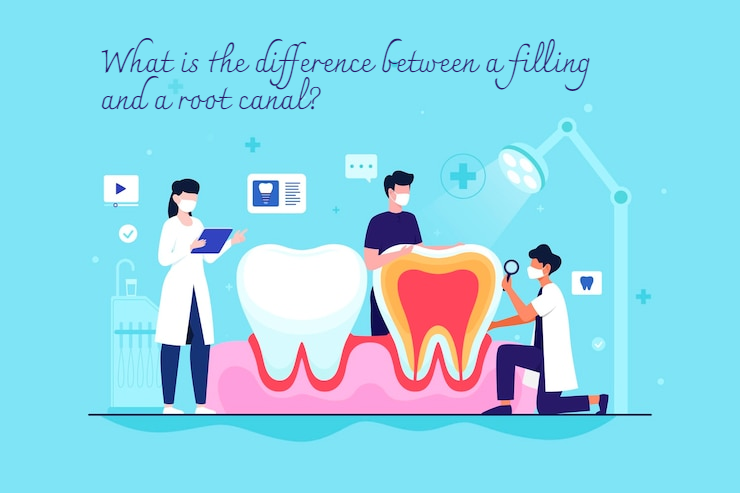If you’re ever considering dental surgery, it’s important to understand the difference between a filling and a root canal. Both treatments can be necessary according to the situation.
What is a filling?
A filling is a procedure that replaces tooth decay or damage with silicone and other materials, on either an upper or lower tooth if needed. It can last anywhere from six to twelve months with or without anesthesia. A filling is a relatively cheap and easy way to restore tooth function while eliminating any discomfort or pain.

Signs you need a filling
If you experience any of the following signs, it’s definitely time for a dental filling.
Dark spots and holes
Tooth decay can cause dark spots or holes on the tooth surface.
Fractured teeth
Fractured teeth can be a pain and inconvenience for the individual as well as an economic burden on society.
What is a root canal?
A root canal is an invasive surgery that removes the infected, diseased or necrotic roots from your teeth. It’s important to remember that it’s an expensive and time-consuming procedure.

Signs you need a root canal
If you experience any of the following signs, it’s definitely time for a Root Canal.
Sensitivity to temperature
If you are experiencing tooth pain, it can be many reasons for pain, from sensitivity to temperature, root canal problems can often occur. It’s important to note that if you have toothache accompanied by other symptoms such as sensitivity to cold or hot temperatures.
Tooth discoloration
Tooth discoloration can happen as a result of tooth decay, gum disease or trauma. If left untreated, tooth decay can eventually cause the gums to recede and tooth colour may change from a healthy white to brown or black.
Swollen gums
If you have purple, red, tender, or swollen gums to touch, it is a sign you need a root canal. This can cause considerable pain and discomfort so it’s important that you seek professional advice right away.
Pain when you touch the tooth
There are various reasons for tooth pain, but the most common one is when there is a problem with the root of the tooth. In this case, your dentist will use numbing agents and an extraction instrument to get rid of the problem root. After the procedure, you might experience some pain and stiffness for a few days but these should gradually go away over time.
A loose tooth
Tooth decay is bacteria attacking and rotting teeth pulp which can eventually lead to cavities. If left untreated, cavities will worsen and may even require a dental crown or an entire extraction of the tooth. Root canal therapy may be necessary in order to save the teeth structural integrity.
What’s the difference between a filling and a root canal?
When it comes to dental pain, there is no one-size-fits-all solution. Every patient is different and requires a treatment plan according to their specific needs. This is where filling and root canal come in.
- Filling is a routine procedure that restores vascularity to the dental pulp, while root canal is an extraction of all or part of the tooth’s roots.
- A filling typically lasts around six months, but a root canal may last up to two years depending on the severity of the pathology involved.
Do I need a root canal of filling?
It can be difficult to determine if you need a root canal or filling. If the dentist is concerned that you may need one, they can perform a filling instead. The procedure is the same, just the material used is different. A root canal is a surgery to remove the entire tooth, including the roots

















